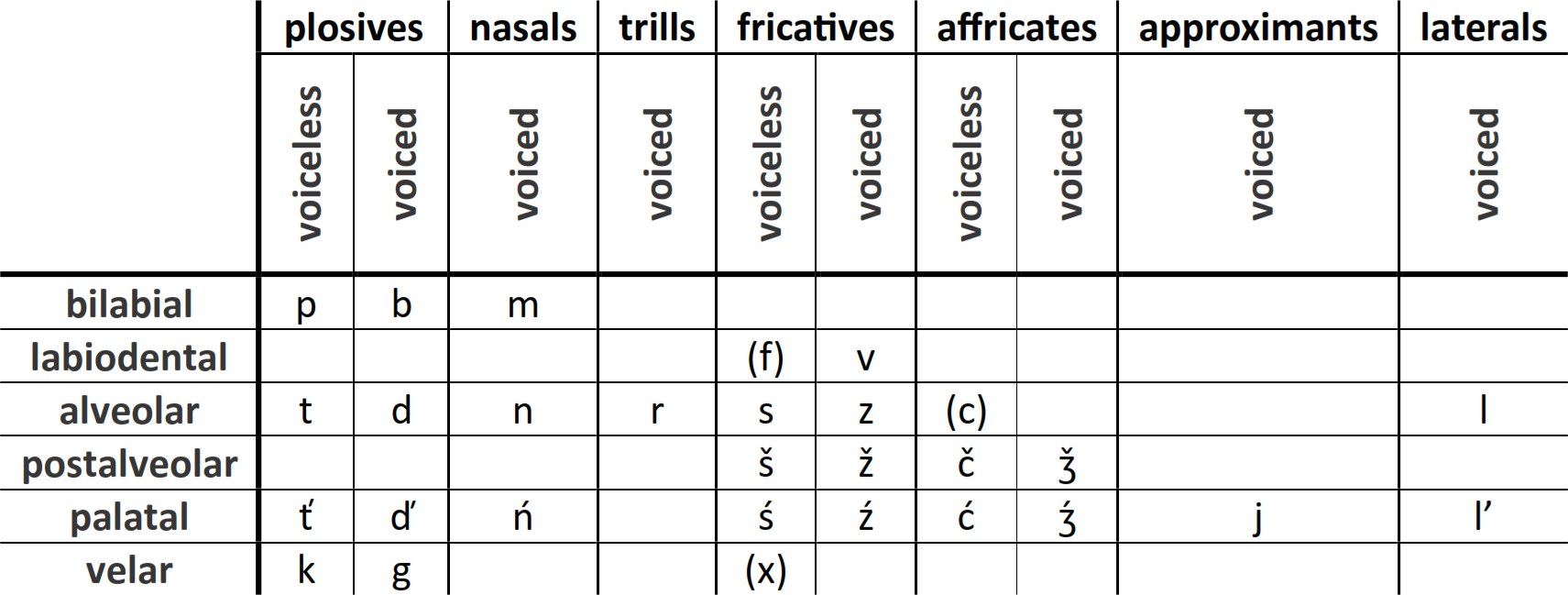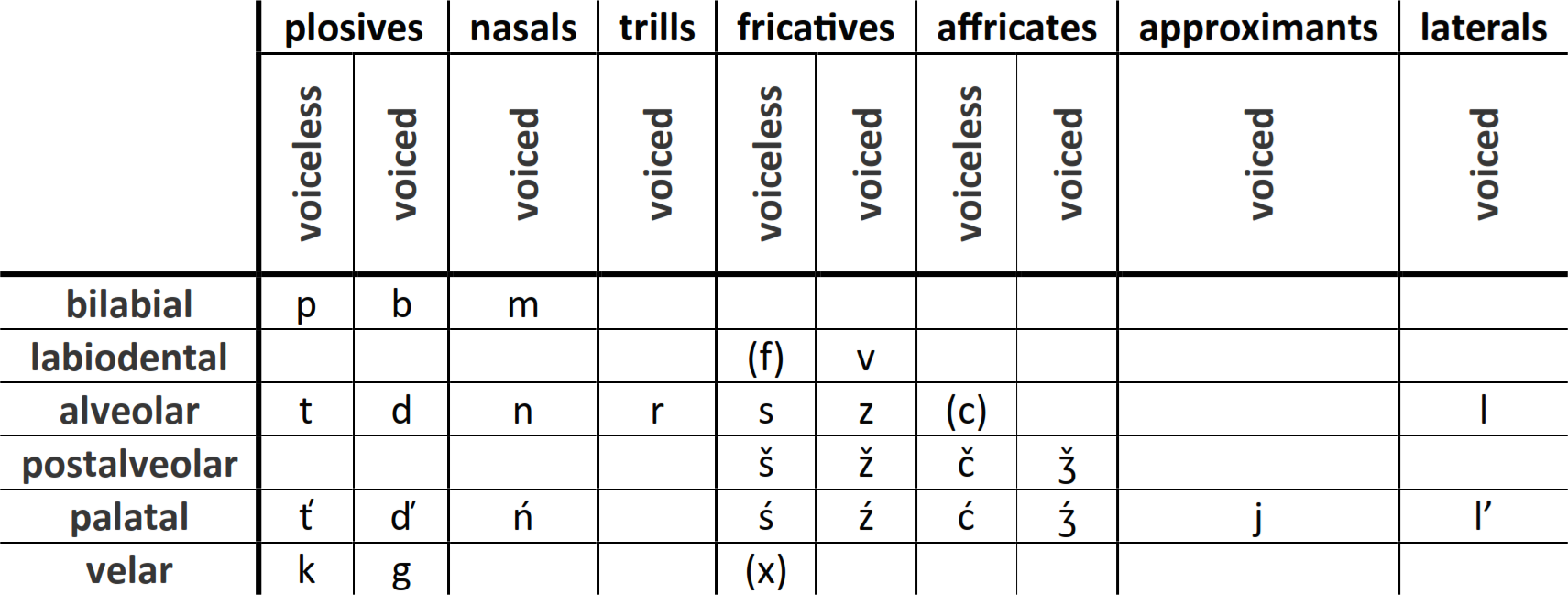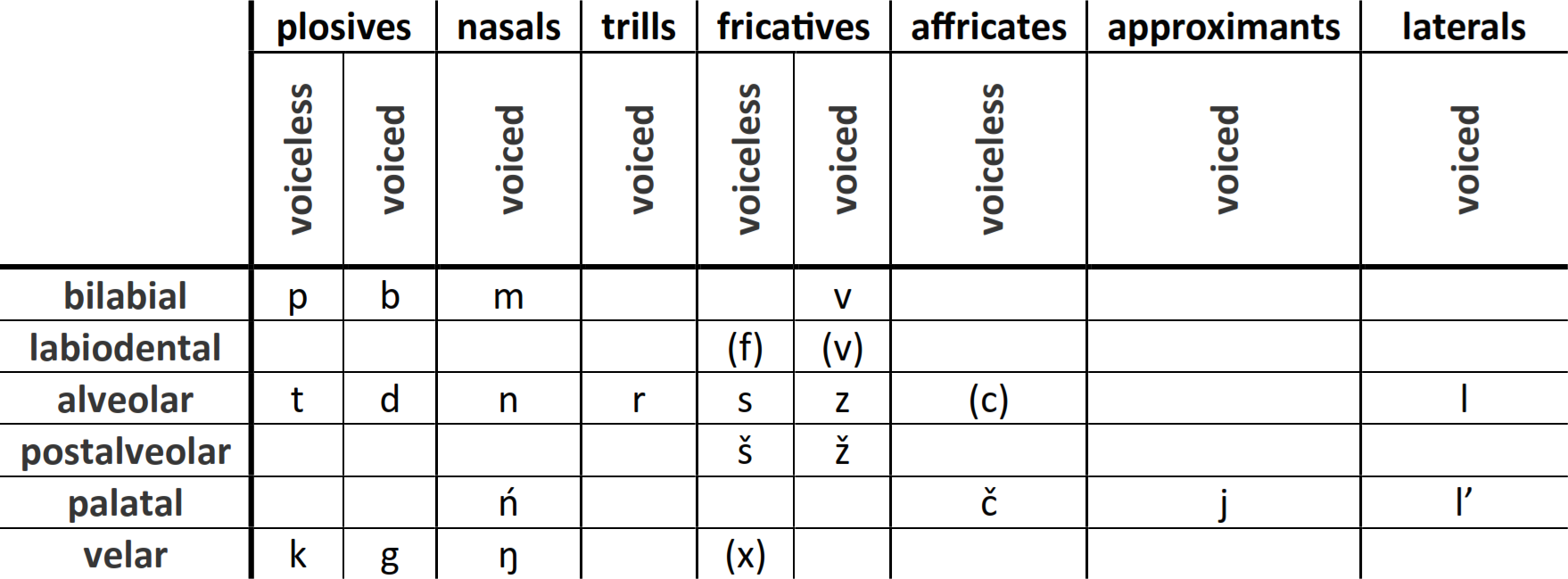How to use the database
Structure | Sources | Materials | Writing | Glossing
There are several ways to search in the database:
- Under the menu point “Search”, you can search for keywords, parameter labels and languages.
- Under the menu point “Browsing”, you can access all parameter descriptions.
- Under the menu point “References”, you can select the list of linguistic literature items for any target language.
Structure of the parameters
The parameter descriptions contain three kinds of information:
- Presenting the language phenomenon under analysis.
- Types of realization of the parameter in the world’s languages, i.e. the possible parameter values.
- Methodological tips: how to specify that a given language belongs to a certain type with regard to the dedicated feature.
If several parameter values apply for a given language, the dedicated codes can be linked together using the following signs between them:
+ (plus), if the values are simultaneously valid in every given case,
& (ampersand), if one or another value applies with a nearly equal chance of occurrence,
/ (slash) if the value displayed before the sign is structurally dominant, i.e. appears in more grammatical numbers, tenses, etc. than the other.
( ) (parentheses) indicate optionality.
Sources of the parameters
When selecting the parameters, we drew overwhelmingly, but not exclusively, on two existing typological databases as well as other linguistic works. Thus, our most important sources were the World Atlas of Language Structures Online (Dryer – Haspelmath 2013), Matthew Dryer's Typological Database (Dryer 2017) and a set of handbooks of linguistic typology listed at menu point “References”. The role of WALS should be specially emphasized. In the majority of cases, we have adopted the feature as specified in WALS, labeling its parameter values with our codes. In other cases, we have doubled or multiplied the dedicated parameter (e.g. because we wanted to display a realization split concerning different parts of speech in some languages). It goes without saying that with each given parameter, the author and bibliographical data of the feature description in WALS are indicated specifically. Thirdly, we naturally have our own specific parameters, the significance of which is substantiated by typological properties of the languages under consideration. Consequently, as far as parameter descriptions are concerned, the leader of the project contributed mostly as an editor, while in some cases he acted as a co-author or author. In the latter case, the parameter description appears without an indication of sources.
Language material in the database
Several sources were used in order to obtain language material for the database. The sources were as follows:
Relevant linguistic literature. A set of parameter values for a given language has been specified with the help of general descriptions, descriptive grammars, dictionaries, and, in some cases, linguistic publications. Besides, some parameter values were determined on the basis of corpora data. (For information on sources, go to the menu point “References”.)
Consultation, fieldwork. Beyond utilization of the relevant literature, additional research was necessary in order to determine some parameter values for each of the three languages, The means applied for this aim include several methods. Firstly, we collected data and explanations from native speaker specialists of these languages via elicitation, grammaticality tests and translation tasks. (Our native co-workers were: Yulia Speshilova for Udmurt, Larisa Ponomareva and Vasiliy Epanov for Komi-Permyak as well as Tatyana Efremova, Anastasiya Saypasheva, Nadezhda Imaeva and Elena Vedernikova for Meadow Mari.) Secondly, Ditta Szabó and Bogáta Timár carried out fieldwork in order to collect additional data from further native specialists and other native speakers, Nikolett F. Gulyás did likewise via online interviews, while Erika Asztalos and Laura Horváth profited from their previous fieldwork too. Eventually, in several cases, the collected data were double-checked by the researchers and the native speaker specialists mentioned above.
Writing systems used for linguistic data in the database
Though official script systems for our target languages are Cyrillic, linguistic examples are displayed in a Latin letter transcription in our database. Script systems for the different languages are based on common principles, the Uralic phonetic alphabet (UPA) having been applied for each of them.
System and marking of phonemes in Udmurt (download)
Consonants

Vowels

System and marking of phonemes in Komi-Permyak (download)
Consonants

Vowels

System and marking of phonemes in Meadow Mari (download)
Consonants

Vowels

Glossing
Generally, we follow the glossing conventions as well as the abbreviations from/provided by the Leipzig Glossing Rules. Please read the following general remarks:
We neither mark nominative case, nor indicative mood (1)–(3) as we interpret them as default forms. Furthermore, if the verb tense is not marked in the gloss, it refers to present tense (1)–(2):
| (1) | Udmurt |
|---|
| marina | myn-e. |
| Marina | go‑3SG |
| ’Marina is going.’ |
| (2) | Meadow Mari |
|---|
| marina | kaj-a. |
| Marina | go‑3SG |
| ’Marina is going.’ |
| (3) | Komi-Permyak |
|---|
| marina | mun-ö. |
| Marina | go‑PRS.3SG |
| ’Marina is going.’ |
Polyfunctional morphemes are usually glossed according to their current function; the Udmurt morpheme -(i)śk can have reflexive, passive (4), and antipassive (5) function for instance. Moreover, it also indicates present tense:
| (4) | Udmurt |
|---|
| perepeć | śi-iśk-i-z | (anaj-en). |
| perepech | eat‑PASS‑PST‑3SG | mother‑INSCOM |
| ’The perepech has been eaten (by the mother).’ |
| (5) | Udmurt |
|---|
| udmurt | kyl-yn | vera-śk-iśk-o. |
| Udmurt | language‑INSCOM | speak‑AP‑PRS‑1SG |
| ’I speak Udmurt.’ |
| (6) | Meadow Mari |
|---|
| balerine-vlak | čüčkədən | vis-alt-ət, | šon-em. |
| ballerina‑PL | often | weigh‑REFL‑3PL | think‑3PL |
| ’Ballerinas, I suppose, weigh themselves often.’ |
| (7) | Meadow Mari |
|---|
| ola-šte | kok | u | škol | čoŋ-alt-eš. |
| town‑INE | two | new | school | build‑PASS‑3SG |
| ’Two new schools are being built in town.’ |
Some participial markers may additionally occur as markers of action nominals, therefore we either use the glosses for participles (8), (10), (12) or nominalizers (9), (11) depending on their actual function:
| (8) | Udmurt |
|---|
| gožt-em | gožtet-se | ysty-ny | vunet-em. |
| write‑PTCP.PST | letter‑ACC.3SG | send‑INF | forget.PST2.3SG |
| ’(S)he forgot to send her/his letter.’ |
| (9) | Udmurt |
|---|
| dyšetiś-len | dyšetskiś-jos-ly | urok-jos-yz | tros | pol | valekt-em-ez |
| teacher‑GEN | student‑PL‑DAT | lesson‑PL‑ACC | many | times | explain‑NMLZ‑3SG |
| umoj | val. | | | | | |
| good | be.PST | | | | | |
| ’It was good that the teacher explained the lesson to the students many times.’ |
| (10) | Komi-Permyak |
|---|
| bekör-yn | em | vundal-öm | kartoška. |
| plate‑INE | be.PRS | cut‑PTCP.PST | potatoe |
| ’There are sliced potatoes on the plate.’ |
| (11) | Komi-Permyak |
|---|
| nasta-lön | uź-öm | völ-i | bur. |
| Nastya‑GEN | sleep‑NMLZ | be‑PST | good |
| ’Nastya’s sleep was good.’ |
| (12) | Meadow Mari |
|---|
| teve | tače | tud-ən | təršə-mə-že | aram | lij-ən | o-g-əl. |
| well | today | (s)he‑GEN | be_eager‑PTCP.PASS‑3SG | pointless | will_be‑PST2.CNG | NEG‑3SG‑be |
| ‘You see, his/her efforts haven’t been futile today.’ |
The inessive and the illative case markers are separate morphemes in Udmurt (13)–(14) and Komi-Permyak, however in certain environments (preceding a possessive or determining suffix) they have the same form (15)–(16). Thus, we gloss polyfunctional, alternating morphemes that only appear in given grammatical environment according to their actual function:
| (13) | Udmurt |
|---|
| bakća-yn | uža-śk-o. |
| garden‑INE | work‑PRS‑1SG |
| ’I am working in the garden.’ |
| (14) | Udmurt |
|---|
| bakća-je | myn-iśk-o. |
| garden‑ILL | go‑PRS‑1SG |
| ’I am going to the garden.’ |
| (15) | Udmurt |
|---|
| bakča-ja-m | uža-śk-o. |
| garden‑INE‑1SG | work‑PRS‑1SG |
| ’I am working in my garden.’ |
| (16) | Udmurt |
|---|
| bakča-ja-m | myn-iśk-o. |
| garden‑ILL‑1SG | go‑PRS‑1SG |
| ’I am going to my garden.’ |
Komi-Permyak employs distinct instrumental (17) and comitative (18) cases, comitative is marked with a case ending (19) and instrumental with a postposition (20) in Meadow Mari. On the other hand, Udmurt uses one form that we mark as inscom (21)–(22) because the marking of the two functions are not separate. for these two functions:
| (17) | Komi-Permyak |
|---|
| kaťa | ors-ö | ćaća-ön. |
| Katya | play‑PRS.3SG | doll‑INS |
| ’Katya is playing with a doll.’ |
| (18) | Komi-Permyak |
|---|
| kaťa | ors-ö | mikov-köt. |
| Katya | play‑PRS.3SG | Mikov‑COM |
| ’Katya is playing with Mikov.’ |
| (19) | Meadow Mari |
|---|
| təj | o-t-əl | gən, | imńə-ge, | pört-ke | jül-en-na | əle. |
| you | NEG‑2SG‑be | if | horse‑COM | house‑COM | burn‑PST2‑1PL | AUX |
| ’Were it not for you, we would have burnt, together with our house and horses.’ |
| (20) | Meadow Mari |
|---|
| me | Mosko-ško | pojezd | dene | kaj-ena |
| we | Moscow‑ILL | train | with | go‑1PL |
| ’We are going to Moscow by train.’ |
| (21) | Udmurt |
|---|
| mon | karandaš-en | gožja-śk-o. |
| I | pencil‑INSCOM | write‑PRS‑1SG |
| ’I write with a pencil.’ |
| (22) | Udmurt |
|---|
| kar-e | eš-en-ym | myn-iśk-o. |
| town‑ILL | friend‑INSCOM‑1SG | go‑PRS‑1SG |
| ’I go to the town with my friend.’ |
We do not necessarily segment morphemes when segmentation is problematic, ambiguous, or irrelevant for the given phenomenon:
| (23) | Udmurt |
|---|
| eš-jos-mes |
| friend‑PL‑ACC.1PL |
| ’our friends (acc)’ |
Abbreviations
- abe – abessive
- abl – ablative
- acc – accusative
- act – active
- adv – adverbial
- ap – antipassive
- appr – approximative
- aux – auxiliary
- cng – connegative stem
- com – comitative
- cond – conditional
- conj – conjunction
- cvb – converb
- dat – dative
- del – delative
- des – desiderative
- det – determiner
- egr – egressive
- ela – elative
- ev – evidential
- freq – frequentative
- fut – future tense
- gen – genitive
- ideo – ideophone
- ill – illative
- imp – imperative
- impr – imperfect
- ine – inessive
- inf – infinite
- ins – instrumental
- inscom – instrumental-comitative
- ipf – imperfective
- nec – necessive
- neg – negation
- nmlz – nominalizer
- ord – ordinal
- pass – passive
- pcl – particle
- pfv – perfective
- pl – plural
- pre – preclusive
- prf – perfect
- pri – prior action
- prol – prolative
- prs – present tense
- pst – past tense
- ptcp – participle
- red – reduplication
- refl – reflexive
- sg – singular
- ter – terminative
- sim – simultaneous action






